Photo





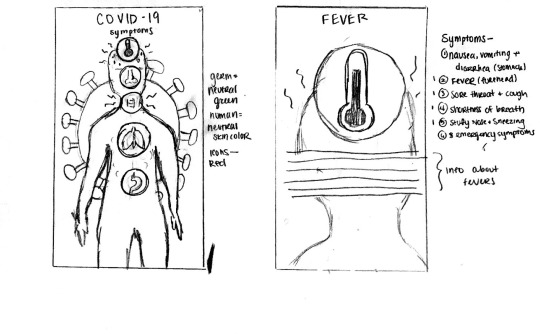

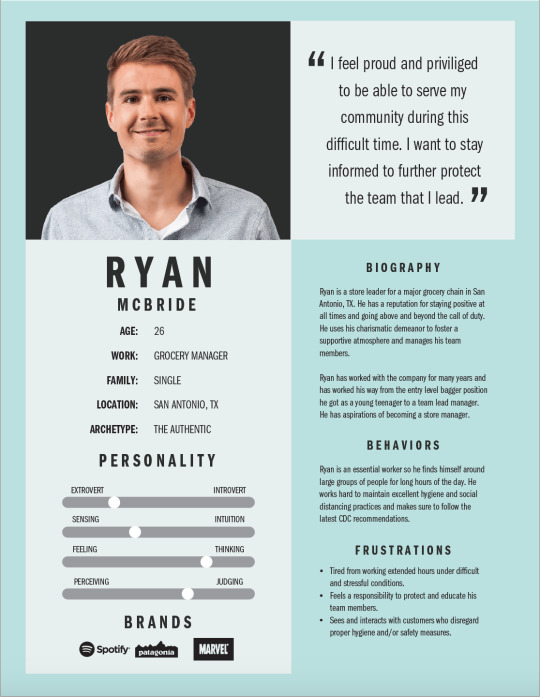


Invision Link: https://invis.io/TRX54WKFM6Z
4 notes
·
View notes
Photo









Concept Strategies Project 2: Packaging
This documents the process from initial sketching and thumbnails to the final outcome of labels for three Slow Burn hot sauces: Raspberry Habanero, Pineapple Jalapeño and Mango Ghost Chili.
1 note
·
View note
Text
I like what you wrote about how you have previously used this process step by step before without realizing it. While reading through your essay and other articles about human centered design, I have found that I also have implemented the various stages of the design process in my projects as well. It is interesting that you have an example of the process outside of a classroom environment and how you had to go through a few iterations and designs before you were able to land on something that was a satisfactory outcome for both you and your client.
Human-Centered Design
Human-centered design, from what I have researched, is “another creative approach to problem-solving that starts with people and ends with innovative solutions tailored to meet their needs.” It is basically how and what you think, and then what you can produce from those thoughts. From the source I found, Design Kit, they say that the process consists of 3 phases: inspiration, ideation, and implementation. In the first phase, inspiration, you will gather as much information as you can directly from your client or the people you are designing for while digging deep into their lives in order to meet their creative needs. In the second phase, ideation, you will begin to understand what you have learned, curate possible designs/roughs, and prototype potential solutions. In the third phase, implementation, you will make the final product, bringing it to life, and up for market. The way you would know if your final product is a success or not, is if you were able to adhere to every need and detail as requested by your client and were diligent and patient throughout the entire process.
This process seems very logical to me. It is a step-by-step guide to how you should go about every project that requires the creative process, especially if you are dealing with a client with a specific vision and already has detailed ideas of what they want. It is especially helpful that this process is broken down into 3 phases. I have used this process of design before without even knowing it. I have had a few friends come to me in the past requesting that I help them out with a certain project of theirs. Of course, I would oblige and help them out in any way I could. In fact, a friend of mine just recently asked if I could help him out with a logo design for him and his friend’s latest short film. Not going to lie, it is hard trying to maintain your creativeness while also adhering the requests of your clients. I had to make several designs before my friend was finally satisfied with a logo he liked, and there is still a few things I have to tweak since it was only a “prototype.” So, in the end, it is definitely a great learning process, especially for me since this is basically what I want to do as my career. From now on, when I have “clients” ask for my help with any project that requires creative assistance, I will think about these 3 phases and make sure they leave 100% satisfied.
6 notes
·
View notes
Text
I appreciate what you wrote about outside influence and opinions and how it affects one’s work. I agree on the importance of collaboration an outside influence when it comes to the process of design thinking and I’ve found this is especially true when I was feeling 'trapped’ or stuck in a stage of a project. For me, I have done a few things on my own without collaboration or feedback, and I can definitely see how having a wide variety of opinions and feedback available to consider when further developing an idea or concept is important to ensure the best possible outcome.
Design Thinking- Is there a specific way to do it?
I did some research on a book called Design Thinking: Understand, Improve, Apply, and I found some interesting assertions in the chapter called The Co-evolution of Theory and Practice in Design Thinking. I discovered that there are many experts on the field of “design thinking” that do not approach the actual subject of design thinking in the same manner. There are many differing expert opinions on design thinking methods, and in the way to implement design thinking in the process of creating new innovations that benefit the users of the product or design. I will attempt to dissect some of the differing approaches, as well as highlight the commonalities between them.
In one example, when some experts on design thinking were interviewed for the book, there were widely varying opinions on whether innovative design work should be outsourced or not. For many of these experts, it was held truth that they should try to collaborate outside of their respective field in order to avoid getting “trapped” in their own methods and routines of design thinking. They argued that creative thinking should be expanded beyond the specific field, so the development of original design ideas should be done by an outside designer(s). However, there were other opinions that an integrative “in-house” approach was more beneficial, and that the designated team (comprised of representatives from different departments) could oversee the creative process from beginning to end stages. This approach is where the collaborative team from fields within the business would be responsible/oversee their respective steps in the design process like research, ideation, and implementation, etc.
Although there are many differing opinions in the leading experts in the field of “design thinking,” there are some common themes that they mostly agree upon. One commonality that most design thinkers agree upon is the benefit of the diversity of disciplines within the design team. It is important to have many different leaders in any collaborative team in order to keep the ideas and innovation flowing. Another one of these commonalities is the idea of focusing on “user needs” as the central focus of designer innovation.
A great design team should not just try to come up with a solution to the first obvious problem, but they should be trying to identify and improve the issue that is at the heart of the users problem. By rethinking or “reframing” the initial design challenge, they can begin to understand what the users actual needs are. Once this is identified, the team can approach the design challenge and apply the problem within their chosen design procedure. This procedure should include many different methods, both unusual and common. Finally, by keeping an open dialogue with the user, the solution will eventually come to fruition.
Since taking part of some of the communication design classes at Texas State University, I have come to understand the vast importance of collaboration with others in the field of design. When creating a unique design solution to an issue (professional or otherwise) it is SO important and helpful to have outside influence and opinions in the refining process. Regardless of the “expert” opinions of the “right way” to be involved with/or direct the creative and design thinking process, the importance of collaboration is paramount.
Plattner, Hasso, et al. Design Thinking: Understand, Improve, Apply. Springer, 2011.
6 notes
·
View notes
Text
It is very interesting what you wrote about ‘Ubongo Kids’ and ‘Akili and Me’, even after reading several articles about human centered design, it had not occurred to me that this process could be used in this context. I am amazed that the creators of the show were able to empathize with young children and define their learning needs before the children themselves had the language to express what they needed to efficiently learn. It speaks to the effectiveness of the process that the children showed marked improvement after a trial of one week.
Design writing 2
Catering to the public’s needs and wants is extremely important when creating products or services. Human centered design and design thinking go hand in hand in creating solutions to a variety of problems. Design thinking is the main solution to the problem while human centered design makes sure the solution is relevant and benefits those who were experiencing the problem. This essay will focus on exactly what human centered design is, and how it is used in real world situations.
Human centered design consists of three main steps. According to IDEO, The first step is inspiration. In this step, it is vital to empathize with the targeted audience that the design is being made for. This is to truly understand the problems that the group faces to generate an effective solution. The second step is ideation in which ideas will begin to start forming. Once the needs of the targeted group are understood, possible resolutions will be introduced and altered until the best one is achieved. The final step is implementation. This is when the best solution is finalized and implemented into a physical product and finally hits the market.
The Human centered design approach was used when a tv network for children in Africa called ‘Ubongo Kids’ created an educational program. The targeted audience was for children ages 3-6. Human centered design was applied to achieve the greatest level of learning and entertainment for the kids. A show called ‘Akili and Me’ was released in 2016 where it was then tested against various other educational programs. Children who watched ‘Akili and Me’ showed higher performance against those who watched other educational tv shows in areas such as number recognition, counting, english language skills, and drawing. After seeing the results, it was found that the children watching the program were at a very early stage of literacy. It was decided that the show needed to focus more on developing the first steps of early literacy. The team then used human centered design to come up with a solution on how to improve the show. They first started with understanding how languages are learned, and how children process the information they are receiving. They did this by sitting down with a child and observing and taking note of how they learned. After the research, ‘Ubongo Kids’ was able to define the two objectives they were hoping the children would learn after watching the show. The first one was the children being able to correctly identify a letter they had learned and the second was for them to be able to say it. They spent months reiterating ideas to teach the children letters, and finally reached a solution. They then did a 1 week trial where they had children watch the videos daily, and the results showed an increasing ability to identify letters and pronounce them. The human centered design process helped the tv network understand the problem faced with teaching young children and create an effective show that children can learn from.
With the creation of the first computer mouse, human centered design was used. Apple asked IDEO to create the first mouse to accompany their new computer in 1980. Designs that had been made so far were too expensive and difficult to make. The team had to iterate many different solutions to aspects of the mouse such as the sound and feel of the click, and the rubber ball in the middle. The final result that they came up with was affordable and mechanically successful. The design of that mouse held its place and is very similar to most mouses that we use today.
In conclusion, human centered design is very important in creating products for the public and meeting their needs. Without empathizing with the customers, solutions will be less effective. In order to create a product or service that is popular, it is first essential to understand the criteria that needs to be met. It is then important to generate multiple solutions in order to find the best one.
Sources:
https://www.designkit.org/human-centered-design
https://www.ubongo.org/case-study/co-creating-videos-for-better-letter-learning/
https://www.ideo.com/case-study/creating-the-first-usable-mouse
2 notes
·
View notes
Text
I think you make a great point about the importance of keeping a sketchbook and continuously developing and keeping track of different ideas through sketching. I have found throughout the creative process, my best ideas will come to me when I least expect them; for example, ideas will pop into my head when I’m driving and listening to music or zoned out at work listening to a podcast, and it’s helpful to always have a sketchbook nearby to catalog those ideas and further pursue them when I’m able to.
Creative Thinking
There’s so much variety and approaches in creative thinking that there isn’t a wrong way of doing it; all creative thinkers use synthetic creative thinking, being able to come up with original ideas while being innovative. Mind mapping is a really good tool for bringing basically our whole brain onto a board or paper to show all our ideas; by combining both it allows us to narrow down our thoughts and ideas to pinpoint the concept we’re trying to deliver. We as creative thinkers dive into many forms of art which we can define as spontaneous art. Spontaneous art for myself and probably many others is a main key player in delivering our ideas and concepts into fruition; which this can also connect with problem finding. I personally keep a sketchbook in which I practice my drawing skill so that it won’t get rusty and in return it helps me pull my emotions onto an image. For creative thinkers drawing or sketching should be a basic skill to attain while other forms of art are a plus in skill growing and creative thinking. I know we have software’s that can execute perfectly clean images, but the feel differentiates completely; if we had to do everything by hand as it was before, hand skill would play a big role in our execution. Just as “Picasso used the process of painting to find inspiration and direction while painting; he didn’t plan before he began painting” according to R. Keith Sawyer; this is true for most people when we just dive into any creative exercise it can help us formulate our concept. The next stage would be an oral presentation of our concept to a person or group of people in which they would hear you out and give feedback on the idea. By allowing ourselves to present our ideas and thoughts to someone else takes courage and practice since we always have a corner in our mind that tells us that our idea is not the best. By having a listener without giving any feedback until the end of the presentation, gives us practice in articulating our thoughts in a cohesive way that hopefully will make sense to the listener. The beauty of this tool is that if the receiver is not understanding what we’re trying to send, we either we need to work on our delivery of information or get their feedback in what needs to be improved for a clearer understanding. Having a different viewpoint through someone else is helpful and eye-opening at times, because we do tend to stare at our work for most of the time that we may overlook small or big details. Although honestly at times we are stubborn and feel that our original idea or stage of work is the best one and we just don’t want to bend to any feedback given; or the opposite is wanting to fix and improve an idea or problem to the point that we want it to be so incredible that we’re not letting ourselves accept another direction. This leads to having flexibility in our concept thinking or job field since its beneficial to adjust in any given situation, but the challenging part is knowing when to let go of an idea or field that is not working for us, then we have made a bigger step in accepting change. As the text references “when you’re doing something unrelated to the design assignment, assuming you’ve prepared, ideas may pop into your head”. I agree with this quote; when I’m not really trying or taking a break from a project, that those are usually the times that I’ll get the best ideas. In being out and about looking at articles or even talking with a person themselves, their characteristic inspires me at times into delivering that characteristic into a concept. There’s so much variety and approaches in creative thinking that there really isn’t a wrong way of doing it; its just about being able to have the curiosity to learn and gain knowledge in improving our craftsmanship in what we deliver to the world.
Citation source:
Landa, Robin. Graphic Design Solutions. Cengage, 2019.
4 notes
·
View notes
Photo





Dust Cover for Larry Brown’s ‘Dirty Work’
Larry Brown’s Dirty Work is about two Vietnam veterans; Braiden is a quadruple amputee who has spent the last twenty-two years confined to a VA hospital bed and Walter has a life threatening seizure disorder as a result of lodged bullet fragments in his brain. The two men meet when Walter is admitted after a seizure nearly killed him, they will spend the next day and night next to each other, talking about their lives and experiences. The imagery is meant to portray the poor, rural south, of which both men grew up, with a dramatic and dark color scheme to match the bleak tone of the novel. Religious signage can be found on the back flap of the cover, which despite previously held prejudices against one another, the two men are able to find common ground through their moral system which is heavily dictated through religious values. Along the spine and creeping across the front cover is an overlay of a thick, almost mangled clump of black tree branches, meant to look like lightening, this guides the viewer to consider that maybe a storm is coming and helps to foreshadow the emotional end to the novel.
0 notes
Photo
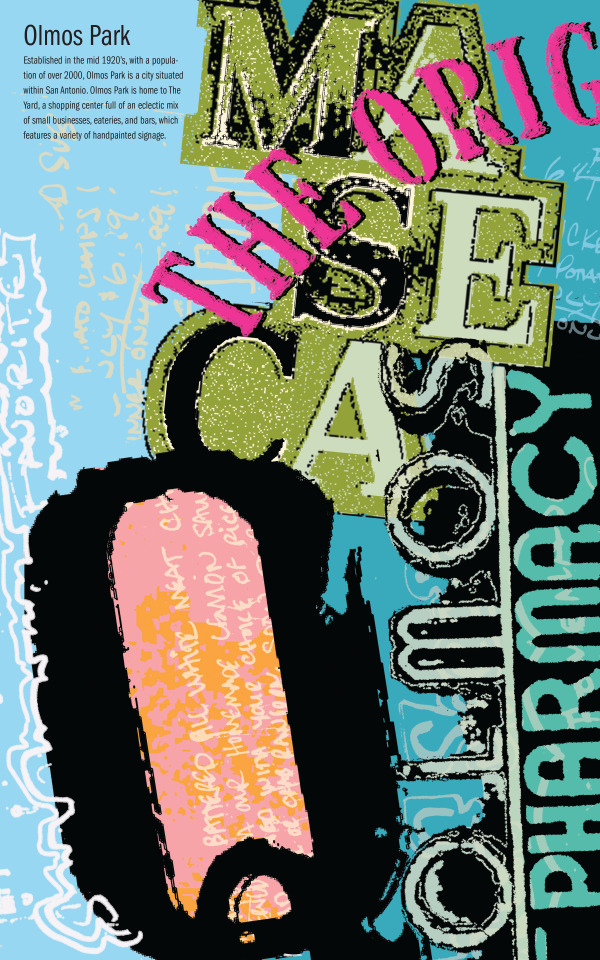
Olmos Park is an small city located within San Antonio, established in 1920, it is home to several small businesses and unique restaurants. Most of these small businesses are located in older buildings, which are often repainted in eye-catching colors and embellished with handmade signage or unique neon lights. A split complementary color scheme was used to enforce hierarchy, with the focal point being the oversized letter ‘Q’. Hoping to capture the feel of the area, visual texture was employed throughout the piece with the use of oversized type and portions of handwritten signs.
0 notes
Text
Creative Thinking
“You can't wait for inspiration. You have to go after it with a club.”
-Jack London, American Novelist
How does a creative person arrive at a “Eureka!” moment? Are some people just more in tune with the right side, the creative side, of their brain than others? Are we supposed to wait around until inspiration strikes? According to psychologist Scott Barry Kaufman, scientific director of The Imagination Institute in the Positive Psychology Center at the University of Pennsylvania, the neuroscience behind the creative process is much more complicated and is largely comprised of four basic stages which engage both the creative right side and analytical left side of the brain. The four stages of the creative thinking process are as follows: preparation, incubation, illumination, and verification.
Preparation is square one of the creative thinking process, it begins by identifying a problem, a specific need, or an otherwise area where a solution is needed. In this phase, you must focus on collecting as much information and doing as much research as possible. Immerse yourself in the subject. This will serve as the foundation and planning stage by which the additional three phases are built on, so being as thorough here as possible is advisable. Ultimately, this is the phase where you are putting every observation and idea on paper, nothing is too silly to be off limits.
Once you have a gained a thorough understanding of the subject and sufficient research has been completed, the incubation phase will begin. In this phase, the information you have gathered will spend some time in your subconscious allowing you to form more complex opinions and create new connections with the subject matter. Use this time to look over all the information gathered and begin narrowing it down while also remaining open to forming new thoughts. Allow your subconscious mind to digest and consider everything you’ve learned, this is often the stage by which creative ideas strike, often unexpectedly. The incubation period can be short or it can be long.
Eureka! Sometime during the incubation period, when all of the information is circulating through your subconscious, you’ll finally have an light bulb moment. This phase is appropriately named the illumination stage, this critical moment generally appears very suddenly and is normally accompanied by a feeling of certainty. You will feel as if a missing puzzle has been put into place. This finally brings us to the the final stage of the creative thinking process, called verification, in which you will test and evaluate your idea to determine if it will work. If it works, you must polish and refine the idea as well as figure out how to appropriately package the idea so the message comes across to your audience. In some cases, an idea may not work out, and the creative process must begin anew.
The creative process, just like everything else, is something that requires practice before you can become skilled at it. There is not an exact formula behind being creative, but this process can provide a tried and true framework to generate and refine creative ideas. Use this as a general approach to creative problem solving, and over time, tweak it to better serve your specific needs.
Works Cited
Sharp, Callum. “The 5 stages of the creative process.” The Writing Cooperative, Nov. 2019, https://writingcooperative.com/the-5-stages-of-the-creative-process-4f8037b7119f
“Creative Thinking Process” The Peak Performance Center, Nov. 2019, http://thepeakperformancecenter.com/educational-learning/thinking/types-of-thinking-2/creative-thinking-process/
Stillman, Jessica. “The 4 Stages of Creativity” Inc.com, Nov. 2019, https://www.inc.com/jessica-stillman/the-4-stages-of-creativity.html
6 notes
·
View notes
Photo

Opposing Forces
Statement of Intent
The fast food industry relies on factory farming to keep overhead costs down and prices low, even though it’s responsible for devastating effects on animal welfare and health, the environment and food quality. The factory farm beef and poultry system houses animals in confined, overcrowded spaces, those animals are often pumped full of antibiotics to prevent diseases caused by filthy environments as well as hormones to encourage faster growth. The composition is arranged so the McDonald’s Big Mac box is the focal point of the piece, meant to look like a heavy, confined space, almost as if this flimsy cardboard box is now a prison for the cows. Black and white was used to portray a somber feeling.
1 note
·
View note
Photo




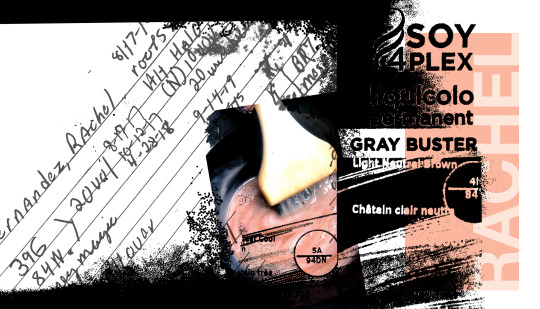

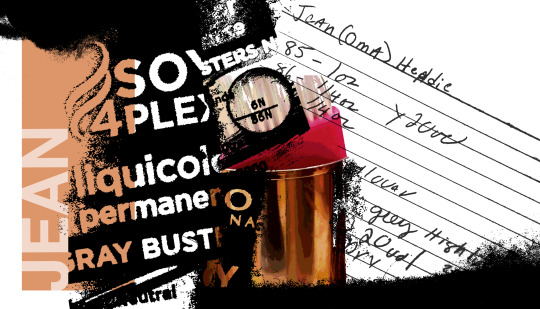

Creative Book
Rosa is a salon owner with a primary focus and interest in coloring hair. She has been in business for multiple decades and keeps track of every client and their hair style and color needs via index cards kept in a handmade, wooden box. Rosa said her entire career is documented in this box, a system she implemented early on when she started her business. Her favorite part of what she does is coloring hair, she mentioned how she enjoys how each time produced a unique outcome, even if the colors used were the same. For the design, each page is dedicated to a long time client, hoping to produce a unique result for each one, while still maintaining a sense of consistency. The layout and photo elements are influenced by the tactile nature of the job, focusing on the different visual textures of the bottles and the notes.
1 note
·
View note
Photo




Designing with Type
Statement of Intent
‘Burn. Build. Repeat.’, an article written about the devastating effects of California’s wildfire problem, opened up describing the, almost ironically named, Carr fire, which was started by surrounding trees catching fire after a motorist’s tire sparked on the highway pavement due to a blowout. The Carr fire blazed for thirty nine days, taking out one thousand homes and killing eight people. This fire happened in an area referred to as the forest tinderbox, which contains large stretches of dry, California forest, the tinderbox exhibits perfect conditions to spread and feed wildfires. The piece focuses on this particular aspect of the article, a highway surrounded by an abstract interpretation of flames, which is also meant to be reminiscent of trees and vegetation. The highway puts the viewer in the middle of it looking into the distance, seeing a blaze that goes on for miles with no end in sight, meant to represent a problem that is far from being solved.
0 notes
Photo

Content in Form
Statement of Intent
These trophies were abandoned and it serves as a bittersweet reminder of lost passions held as a child, bitter in that we may feel disconnected from activities that once brought us joy but sweet that these mementos from another’s childhood may help each of us remember proud moments from our own past. The trophies were photographed in a dark corner, lying on their sides, isolated and slightly off center in composition to convey the smallness and discarded nature of them. Details have been obscured within the trophies to help them have an anonymity and universal relatable aspect to them.
0 notes
Text
Design Thinking 101
“We’re always looking, but we never really see…it’s the act of attention that allows you to really grasp something, to become fully conscious of it.”
-Milton Glaser, designer of the I <3 NY logo
What is design thinking? Design thinking is a process of applying creative thinking towards traditional business problems. The process was coined by David Kelley and Tim Brown of IDEO, who combined methods and processes that had been around for years into a unified framework. Design thinking ideology approaches problem solving with a user centric focus with the belief that this leads to innovation and thus a competitive advantage. The design thinking process is comprised of three stages of thinking which include understanding, exploring, and materializing which are then further broken into six phases that are empathize, define, ideate, prototype, test, and implement.
Design Thinking revolves around developing a clear understanding of the user and addressing the problems that need to be solved. In order to accomplish this, the understanding portion of design thinking is broken into two phases: empathize and define. Empathizing is the preliminary phase of the design thinking process, this stage is crucial to understanding questions such as: who is the user? how do they feel and what do they do? Once this is done, use the gathered information to determine what needs and problems remain unaddressed for the user. For example, when considering the user base for a specific product, ask the question, “Is there an unsolved problem across many different users?” Empathizing with the user and defining unaddressed problems leads to innovation.
Once the users’ needs and unsolved problems have been identified, the second portion of the design thinking process is exploring potential solutions. This portion is again broken into two phases: ideation and prototyping. The ideation phase is brainstorming as many ideas and new angles for problem solving as possible. This phase is the no judgment zone, ideas should challenge the status quo and it is encouraged to explore alternatives. By the end of this process, ideas should be narrowed down before moving forward to the second phase: the prototyping phase. Prototyping is the phase where ideas finally turn into tangible products. During this step, flaws and product constraints can be easily identified and the prototypes may go through several iterations before landing on a solution ready to move on to the next phase of the design process.
The third and final portion of the design thinking process is broken into two phases: testing and implementing. In the testing phase, product prototypes are put in front of real users to gather feedback. Ask questions such as, “Are users’ needs being met?”, “Has this improved the users’ experience?”, “Has it made a positive change in how the user accomplishes a task?”. In most instances, the results of the testing phase will mean revisiting the prototyping phase to make changes or redefine specific challenges. Once this phase is complete, the final step is implementation. This is where the solution materializes and affects users’ lives.
In summary, the design thinking process is simply one approach by which problems can be solved. It is a framework of thinking that is user centric with advantages such as addressing user problems not previously addressed, utilizing collective and collaborative expertise through teamwork, and creating innovative products that solve problems in new and unique ways.
Works Cited
Gibbons, Sarah. “Design Thinking 101.” NN/g Nielsen Normal Group, Nov. 2019, https://www.nngroup.com/articles/design-thinking/
4 notes
·
View notes
Photo






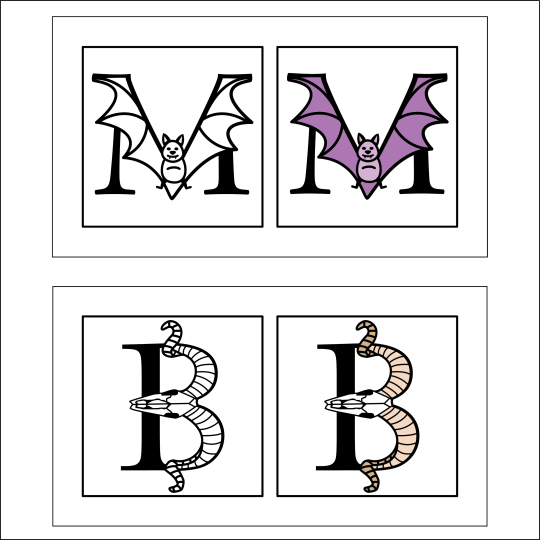
Letterforms and Objects
Statement of Intent
The letter ‘M’ was illustrated with a bat using the typeface Garamond. The top of the wings were designed to mimic the contours of the vertex, with the weight of the stroke being slightly higher than the rest of the bat to help the ‘M’ stand out. The weight of the stroke for the rest of the bat, including the body, head, and face, are uniform to create a sense of unity.
The letter ‘B’ was illustrated with the skull of a ram using the typeface Baskerville. The horns of the ram illustrated the bowls of the ‘B’, with the outer stroke of being slightly heavier than the rest of the ram to keep the integrity of the ‘B’ outline. The placement of the ram head was done so the counter forms on the ‘B’ were still present. The interior lines and curves of the ram were kept at the same weight to maintain unity.
0 notes








